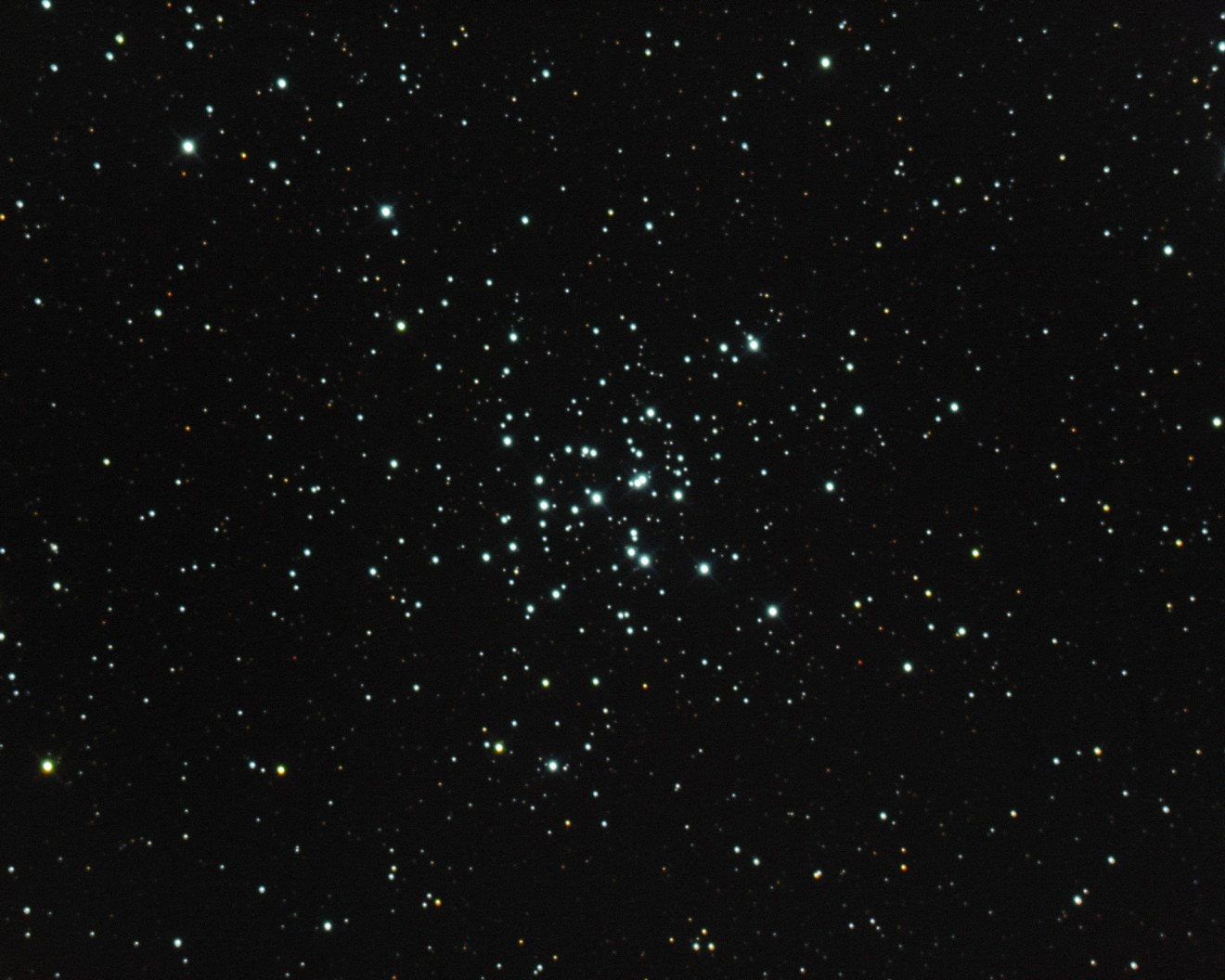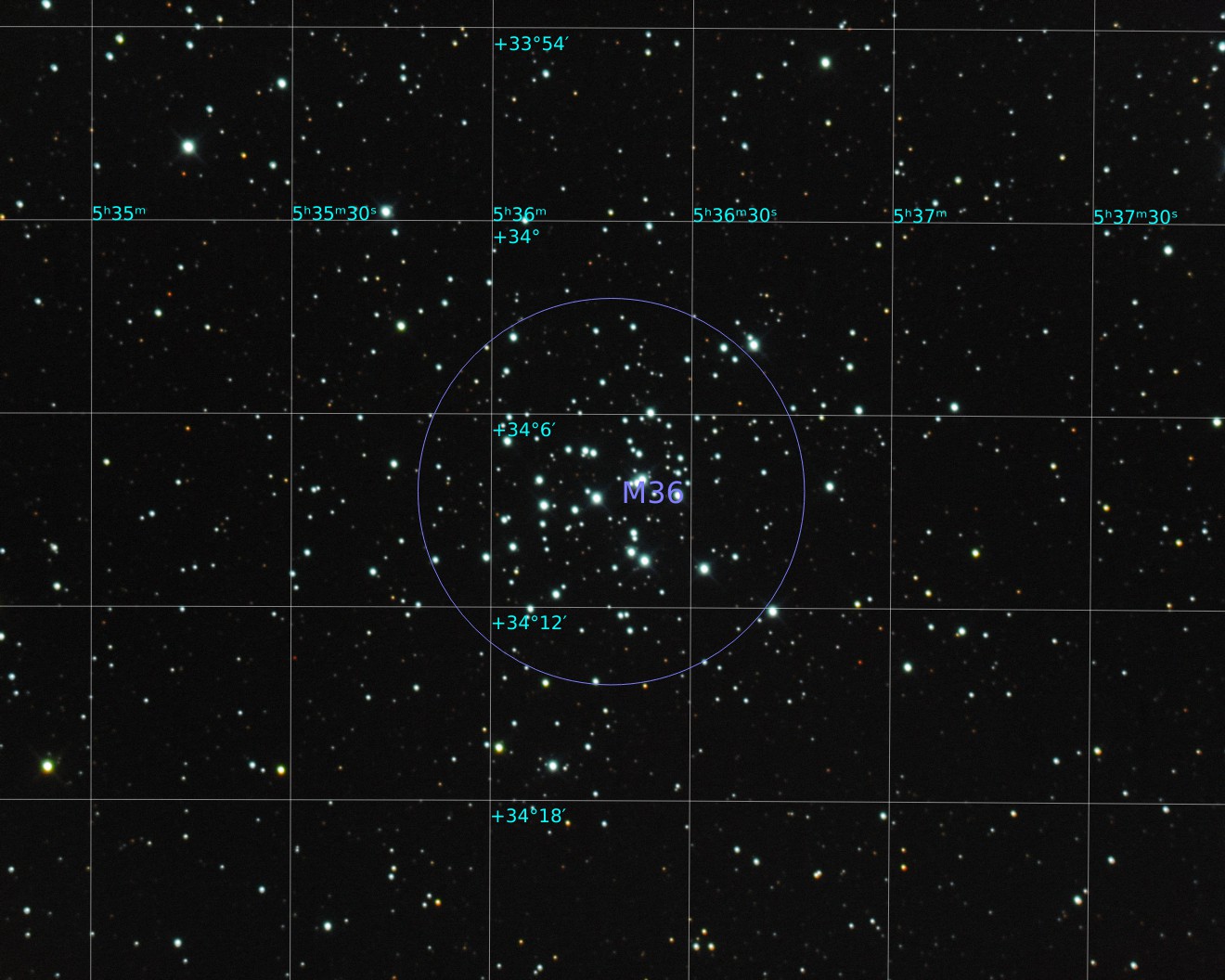 Science Daily: Mars
Science Daily: Mars
- Surprising insights about debris flows on Mars March 14, 2024
- Giant volcano discovered on Mars March 13, 2024
 Science Daily: Uranus
Science Daily: Uranus
- New images reveal what Neptune and Uranus really look like January 5, 2024
- Ringing in the holidays with ringed planet Uranus December 19, 2023
 Science Daily: Pluto
Science Daily: Pluto
- How Pluto got its heart April 15, 2024
- Evidence of geothermal activity within icy dwarf planets February 15, 2024
 Science Daily: Kuiper Belt
Science Daily: Kuiper Belt
- How Pluto got its heart April 15, 2024
- Evidence of geothermal activity within icy dwarf planets February 15, 2024
And if that title wasn’t enough to pull you in…
The seeing in Brooklyn is always bad. I’m on a flight path to LaGuardian. So 3-arcsec is typical. And did I mention I’m in Brooklyn, NY? So the light pollution is always bad. Which make star clusters reasonable targets.
| Object | M36, Open Cluster |
| Camera | ASI1600MM-Pro, LRGB |
| Lens/Scope | AstroTech RC6 |
| Exposure | 121 x 15 sec Red 135 x 15 sec Blue 130 x 15 sec Green 270 x 5 sec Luminance |
| Location | Bay Ridge, Brooklyn, NY |
| Processing | PixInsight: more steps than I care to remember |
I was still trying to get the collimation right for my AstroTech RC6 after having dropped it the previous year. I’m pretty sure that mechanically, it was never really aligned well, but at least at the time this image was taken, I had improved things enough that I was again getting diffraction spikes. I think I did another round of collimation after this was done and have managed to get the image better balanced in the corners, but that’s for a future image.
This was sitting on my (since sold) Celestron CGX-L mount which was not playing nice that night. For some reason, it would occasionally decide to stop tracking. It might have been the laptop trying to conserve heat :-). Since I’ve sold the mount since them, I’m not going to find out. In any event, that meant that I had to toss a few hundred frames. These are all 5-15 second frame, depending on the filter. Throw in a bit of wind, a few planes passing through the field, and even with the frames that were tracking, I lost about 30-40% after using PixInsight’s subframe-selector to toss out those with low star counts, excessive FWHM, or low eccentricity. To the extent I can automatic this, I don’t care too much.
Exposures probably should have been higher for the color data, and even the luminosity data has a pretty noisy background. I was trying to avoid saturating on the brightest stars, but maybe I need to reconsider that.
I used an LRGB combination, following some tips from Adam Block studios (I recently subscribed to his site and tutorials and am currently suffering from brain overload having watched hours and hours of guides). That let me rescue some fairly poor quality data into a mediocre image. Oh well, it’s the time of year that I can go try this again soon.
Written by Roland Roberts
Search
.Archives
- April 2024 (3)
- September 2022 (5)
- April 2022 (1)
- January 2022 (3)
- December 2021 (4)
- September 2021 (3)
- July 2021 (1)
- January 2021 (1)
- November 2020 (2)
- October 2020 (2)
- September 2020 (2)
- August 2020 (5)
- July 2020 (1)
- November 2019 (2)
- September 2019 (1)
- August 2019 (2)
- September 2017 (1)
- August 2017 (1)
- September 2015 (3)
- August 2015 (2)
- June 2015 (5)
- May 2015 (3)
- May 2013 (2)
- January 2013 (1)
- December 2012 (2)
- September 2012 (1)
- June 2012 (1)
- May 2012 (1)
- October 2011 (2)
- September 2011 (2)
- April 2011 (2)
- March 2011 (10)
- January 2011 (8)
- November 2010 (2)
- October 2010 (1)
- September 2010 (3)
- August 2010 (2)
- July 2010 (1)
- June 2010 (1)
- April 2010 (3)
- February 2010 (3)
- January 2010 (3)
- December 2009 (6)
- November 2009 (3)
- October 2009 (7)
- September 2009 (8)
- August 2009 (4)
- July 2009 (1)
- June 2009 (2)
- May 2009 (2)
- April 2009 (7)
- March 2009 (1)
- February 2009 (6)
- January 2009 (4)
- December 2008 (4)
- November 2008 (3)
- October 2008 (11)
- September 2008 (4)
- August 2008 (5)
- July 2008 (5)
- June 2008 (2)
- April 2008 (4)
- March 2008 (18)
- February 2008 (9)
- November 2007 (1)
- October 2007 (3)
- July 2007 (3)
- April 2007 (1)
- March 2007 (6)
- February 2007 (3)
- December 2006 (3)
- October 2006 (4)
- September 2006 (1)
- July 2006 (5)
- May 2006 (10)
- April 2006 (9)


